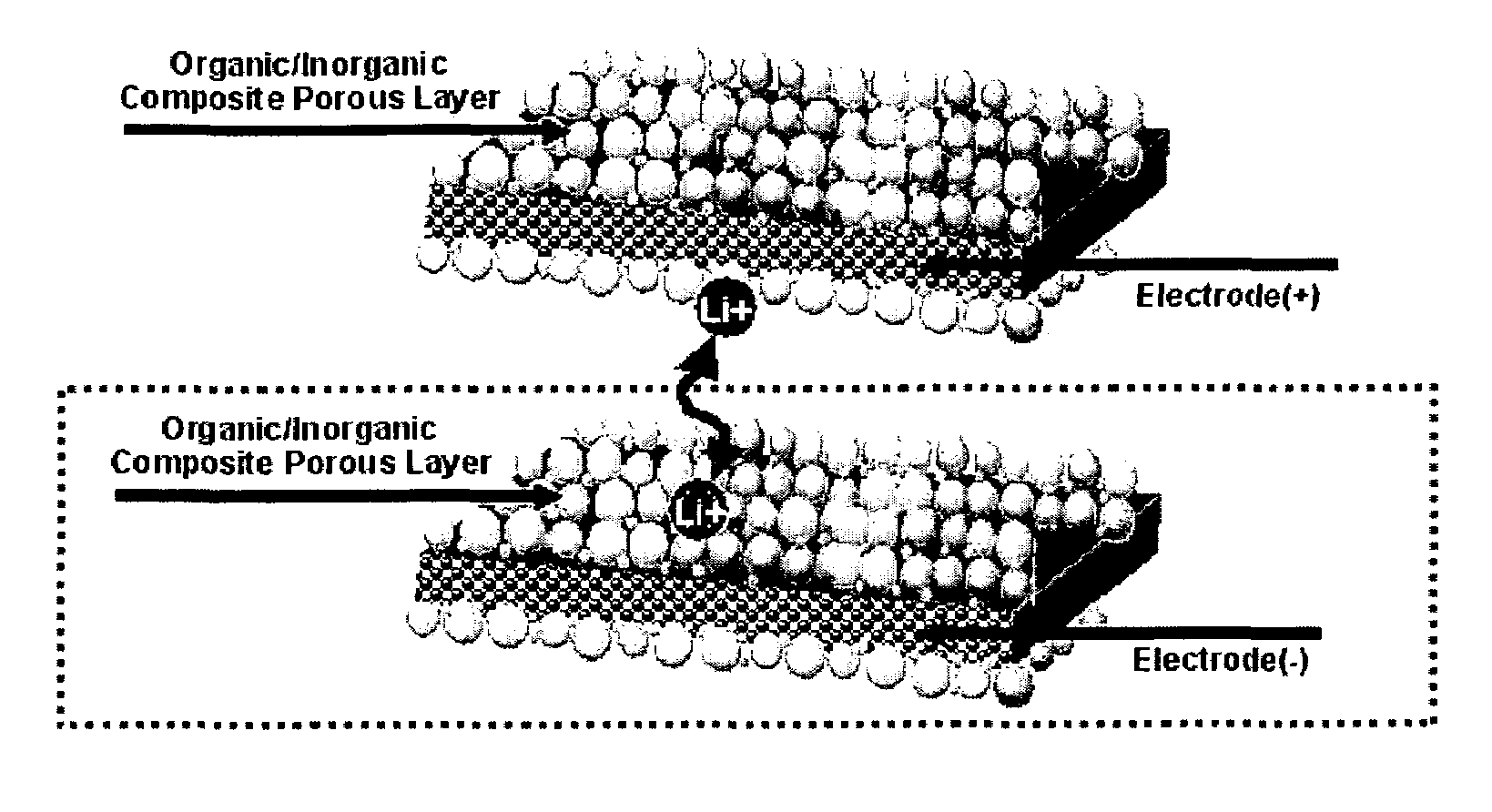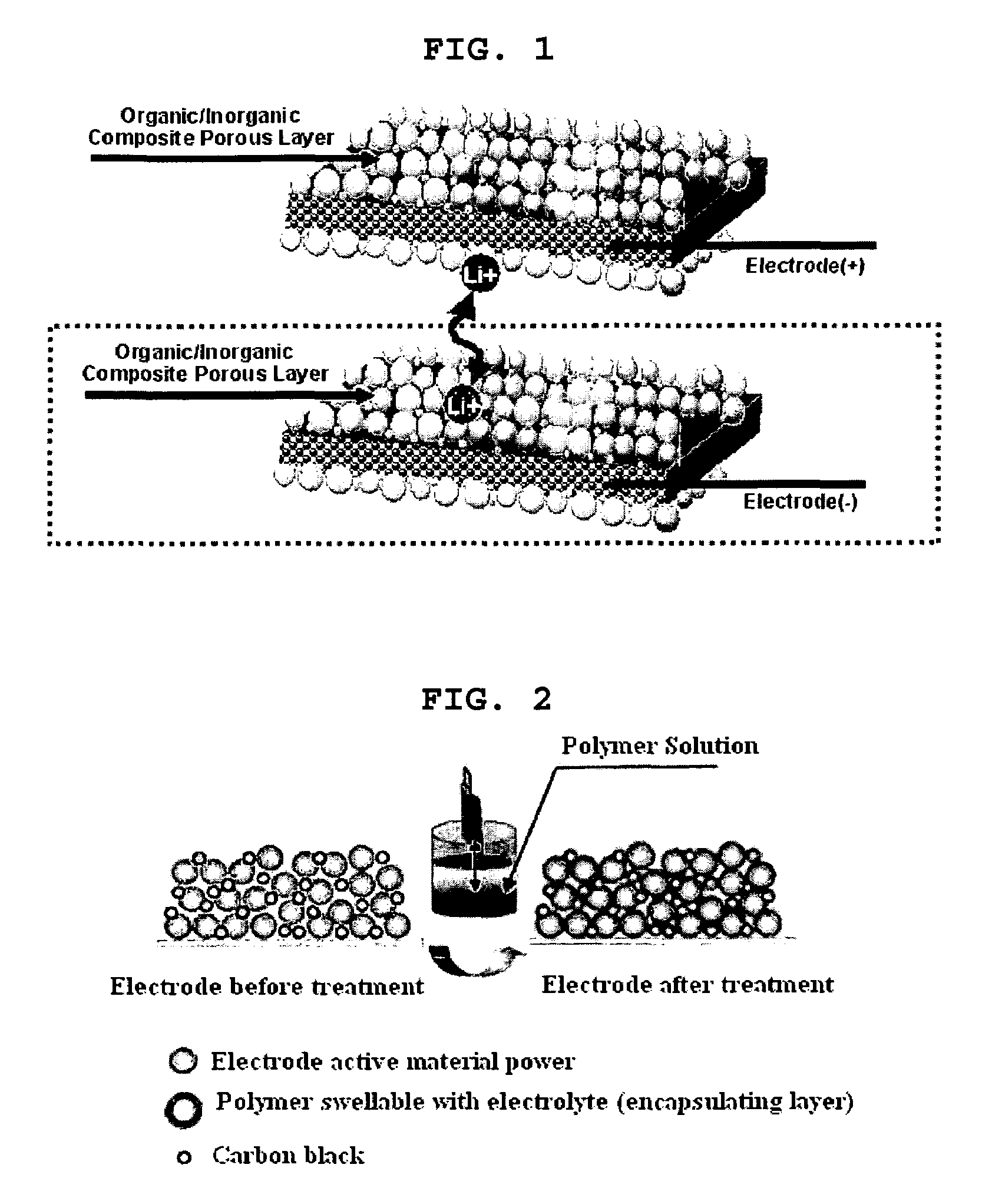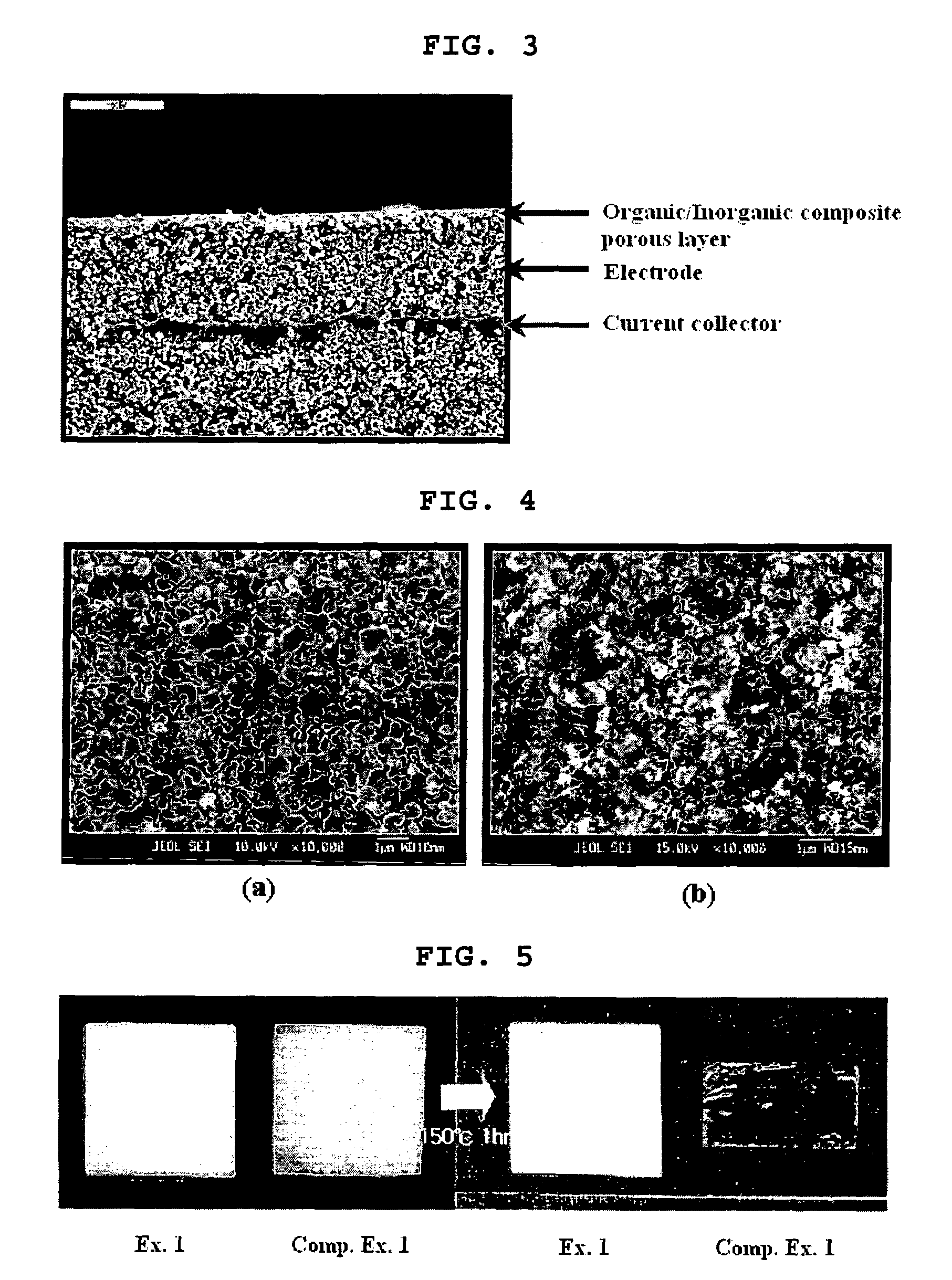Organic/inorganic composite porous layer-coated electrode and electrochemical device comprising the same
a composite porous, electrode technology, applied in the field of electrochemical devices, can solve the problems of complex manufacturing process, limited safety of batteries in terms of ignition and combustion, and explosion of batteries, and achieve the effect of improving the performance and safety of an electrochemical devi
- Summary
- Abstract
- Description
- Claims
- Application Information
AI Technical Summary
Benefits of technology
Problems solved by technology
Method used
Image
Examples
examples 1-9
Example 1
Organic / Inorganic Composite Porous Coating Layer-Coated Electrode and Manufacture of Lithium Secondary Battery Comprising the Same
[0092]1-1. Electrode Having Organic / Inorganic Composite Porous Coating Layer (PVdF-CTFE / Al2O3)
[0093](Manufacture of Anode)
[0094]To N-methyl-2-pyrrolidone (NMP) as a solvent, 96 wt % of carbon powder as an anode active material, 3 wt % of PVDF (polyvinylidene fluoride) as a binder and 1 wt % of carbon black as a conductive agent were added to form mixed slurry for an anode. The slurry was coated on. Cu foil having a thickness of 10 μm as an anode collector and dried to form an anode. Then, the anode was subjected to roll press.
[0095](Manufacture of Cathode)
[0096]To N-methyl-2-pyrrolidone (NMP) as a solvent, 92 wt % of lithium cobalt composite oxide (LiCoO2) as a cathode active material, 4 wt % of carbon black as a conductive agent and 4 wt % of PVDF (polyvinylidene fluoride) as a binder were added to form slurry for a cathode. The slurry was coate...
example 2
[0101]Example 1 was repeated to provide an electrode having an organic / inorganic composite porous coating layer (PVdF-CTFE / BaTiO3) and a lithium secondary battery, except that BaTiO3 powder was used instead of alumina (Al2O3) powder, as inorganic particles in the coating material on the electrode surface.
example 3
[0102]Example 1 was repeated to provide an electrode having an organic / inorganic composite porous coating layer (PVdF-CTFE / PMN-PT) and a lithium secondary battery, except that PMN-PT(lead magnesium niobate-lead titanate) powder was used instead of alumina (Al2O3) powder, as inorganic particles in the coating material on the electrode surface.
PUM
| Property | Measurement | Unit |
|---|---|---|
| particle diameter | aaaaa | aaaaa |
| particle diameter | aaaaa | aaaaa |
| pore size | aaaaa | aaaaa |
Abstract
Description
Claims
Application Information
 Login to View More
Login to View More - R&D
- Intellectual Property
- Life Sciences
- Materials
- Tech Scout
- Unparalleled Data Quality
- Higher Quality Content
- 60% Fewer Hallucinations
Browse by: Latest US Patents, China's latest patents, Technical Efficacy Thesaurus, Application Domain, Technology Topic, Popular Technical Reports.
© 2025 PatSnap. All rights reserved.Legal|Privacy policy|Modern Slavery Act Transparency Statement|Sitemap|About US| Contact US: help@patsnap.com



